How Us Costume Designer Kym Barrett Spooked Audiences With Jumpsuits
Happy Halloween! Quick, how many of you are donning red overalls and going as the deadly doppelgangers from Us? Even if writer/director Jordan Peele isn’t really into the idea, there’s no denying the power of this simple garb to instill terror. The monsters in Us are hatched not from labs or lagoons or outer space, but from all-American inequities, so it’s only fitting that they wear all-American denim. At least that’s how costume designer Kym Barrett figured it, working with Peele to design the spooky uniforms for homicidal doppelgangers who terrorize Adelaide (Lupita Nyong’o), her husband Gabe (Winston Duke) and their kids.
Drawing inspiration from iconic horror imagery including Michael Myers’ Halloween jumpsuit, Freddy Kruger’s Nightmare on Elm Street bladed gloves and the zombies from Thriller, Barrett kept it simple for the rebellious clones, known collectively as The Tethered. She says, “They needed to have a uniform because once the Tethered start killing people, you have to be able to recognize who is on your team and who isn’t. The easy way to do that was to show everybody wearing red Dickies. We needed something that was recognizably American, and it couldn’t be expensive because everyone needed to have access to the same clothes.”
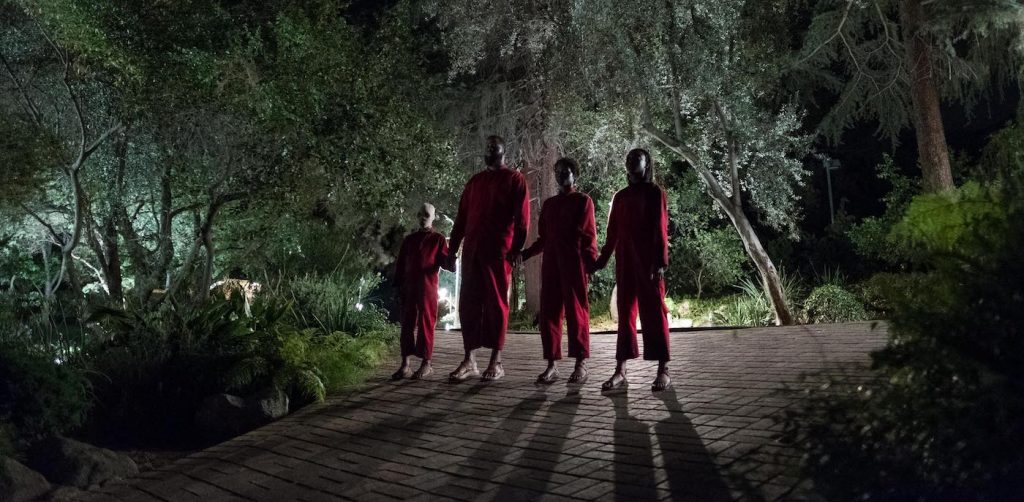
Barrett is accustomed to creating more elaborate wardrobes. A native Australian, she attended theater school with Baz Luhrman. In 1996, Barrett costume-designed his radically contemporary version of Romeo + Juliet. Sci-fi spectacle The Matrix followed, and in recent years she’s dressed up comic book movies Spider-Man and Aquaman. “Working with Jordan, it was really nice to have a job where you have to do the opposite of that [kind of movie],” she says. “Us is quite complex so you don’t want the clothes to take the focus away from being able to concentrate on the story. It’s a low-budget movie so we just put the Dickies and sandals on the actors, showed them to Jordan and he was like, ‘Oh that’s good.’ From there we kept refining the outfits and putting them back together until we got the right shape. It was actually a quick process.”
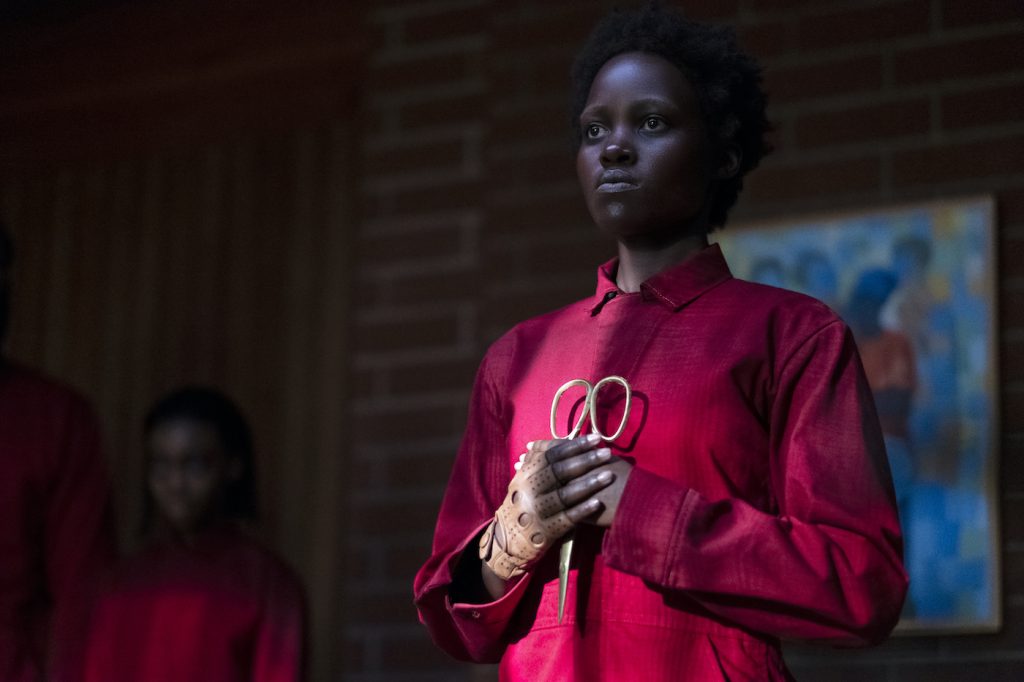
The doppelgangers start out in clean uniforms that become increasingly stained as the mayhem ratchets out of control. Barrett says, “We constructed probably 10 or 12 different versions of each uniform at differed levels of bloodiness. I wanted it to look like slight dry blood and slightly wet blood to give it an open wound kind of feeling. Our team had a shop with dye pots, so we dyed the blue denims a true blood red, and then we over-dyed all the shadowing into it. I was able to have control over exactly what was happening with the colors, maintaining continuity and following the action. Sometimes the outfits were wet blood, sometimes they were dried blood, which meant the aging department had a huge job.”
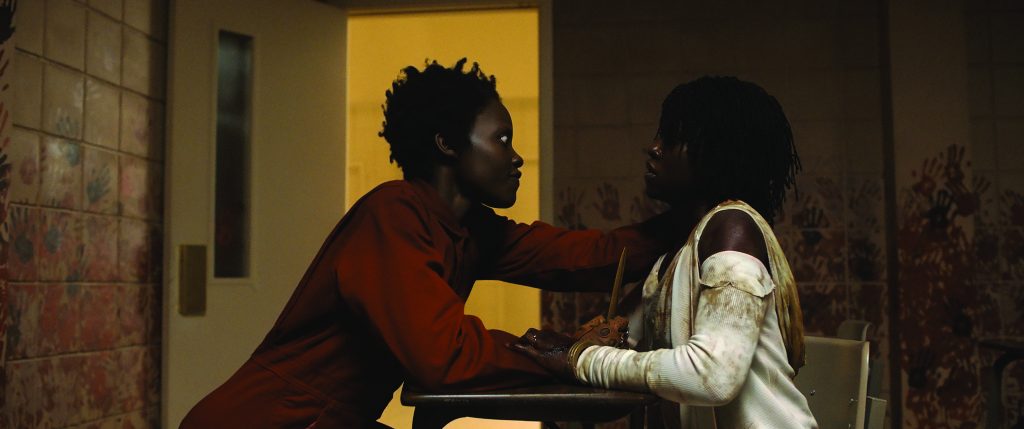
In devising the costumes for Adelaide’s children Jason (Evan Alex) and Zora (Shahadi Wright Joseph), Barrett took cues from her own children. “I thought about things that they liked to wear and played around with that. For Jason, magician pajamas just seemed right, so we made our own version of the tuxedo graphic for the pajama top. For Zora I also wanted something graphic, so we put her in a tee-shirt that has the Vietnamese word for ‘rabbit.’” In Us’ medical research backstory, rabbits figure prominently. Barrett says, “It was cool to insert these little in-jokes and clues into the movie through the clothes.”
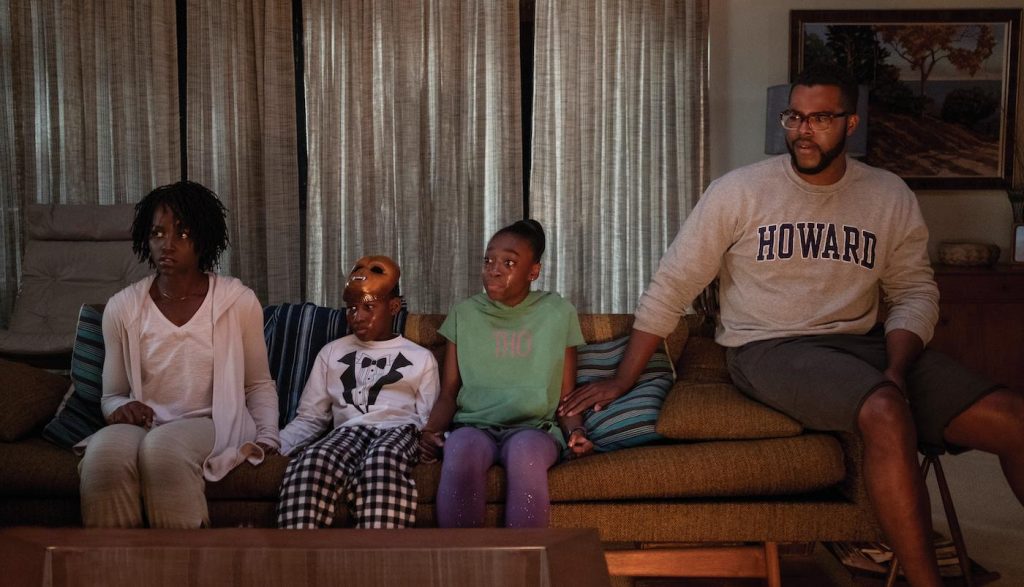
Dressing the body doubles required coordination with the casting department since Barrett had to make sure the actors portraying “bad” versions of Adelaide and her family looked credible on screen. “Casting sent us a couple of selects for each actor and then we measured them because proportion is very important,” she says. “We have all these tricks of the trade to make someone look fatter or skinnier. We can even give you bigger shoulders, give you bigger biceps, stronger thigh muscles and make you look much slimmer. But you can’t make someone’s joints longer or neck shorter. We had to find the right body doubles because if someone doesn’t walk the same way, for example, those little tiny things will make the audience think ‘that’s not the same person.'”
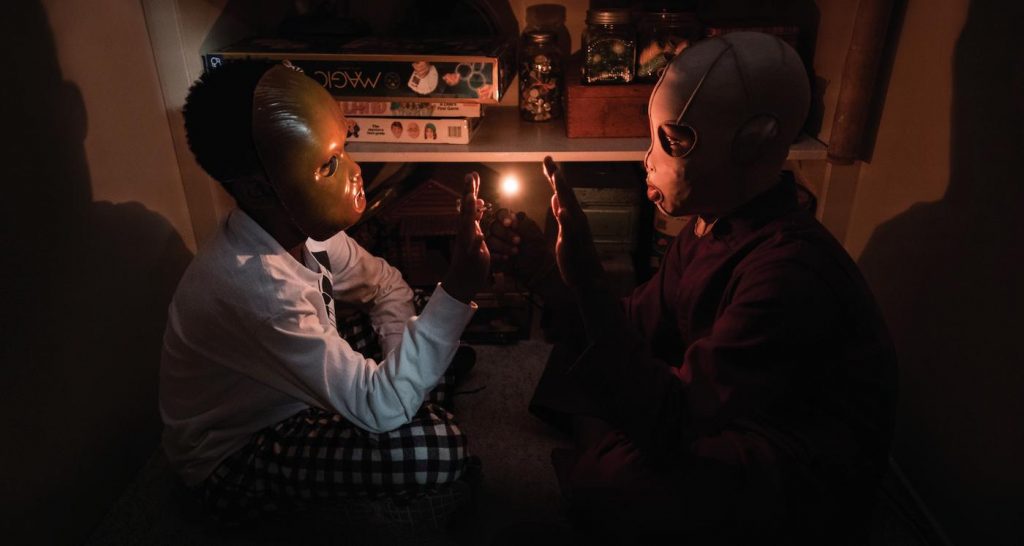
Guided by Peele, Barrett formed a tight team with production designer Ruth De Jong (Manchester by the Sea) and director of photography Michael Gioulakis (Glass). She explains “I’ve always loved having a close relationship with production designers and D.P.’s. It’s not just about having the same look or the same colors or whatever. In Us, it’s about trying to create a cohesive world where you believe everything’s completely normal and then everything changes in one second and you’re faced with your biggest fear. For me, that would be an earthquake, L.A.’s burning and I can’t get to my children. So one reason I think Us works so well is that you feel like everything’s normal normal normal normal and all of a sudden it’s not normal anymore. That’s what I think horror should be. It’s not really about blood—although we had plenty of blood—it’s more about psychological horror. Jordan puts in these tiny subconscious things that feel kind of off, but then the story builds up until it’s too late and you can’t get out.”
Featured image: The Wilson family doppelgängers (from left) Abraham (Winston Duke), Umbrae (Shahadi Wright Joseph), Pluto (Evan Alex) and Red (Lupita Nyong’o) in “Us,” written, produced and directed by Jordan Peele. Photo Credit: Claudette Barius/Universal Pictures



